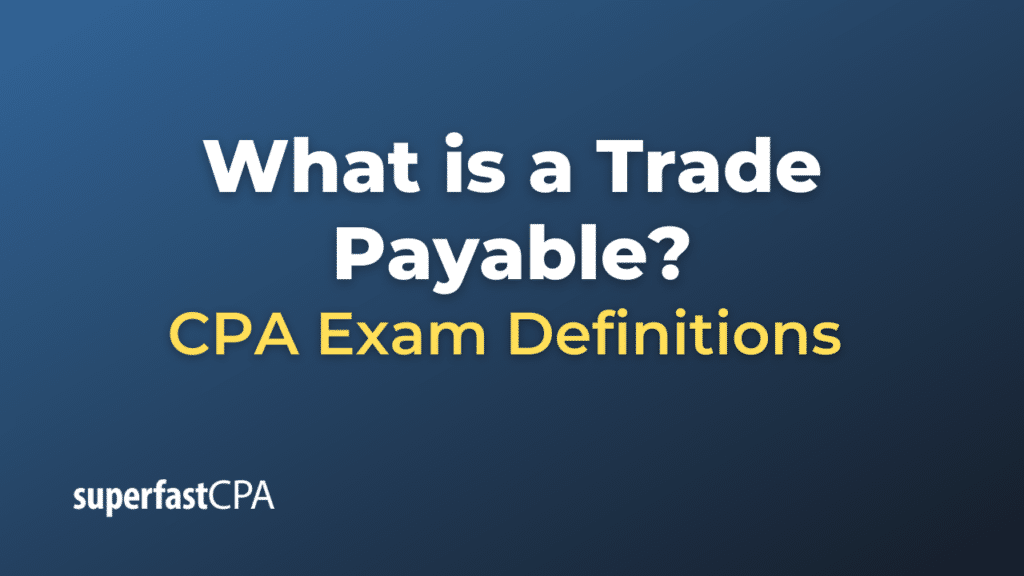Trade Payable
A “trade payable” refers to an amount owed by a company to its suppliers for goods and services purchased on credit. In the context of a company’s balance sheet, trade payables are listed as a current liability. Typically, these are amounts due to vendors that provide inventory, supplies, or other goods that are essential for a company’s ongoing operations.
When a company buys goods on credit, it doesn’t immediately pay cash. Instead, it creates an obligation to pay in the future, typically within a short period, such as 30 to 90 days. This obligation to the supplier is recorded as a trade payable.
In accounting, when a company receives an invoice from a supplier:
- The company will debit (increase) its “Inventory” or “Expense” account, depending on the nature of the purchase.
- The company will credit (increase) its “Trade Payables” account.
When the company eventually pays off the invoice:
- The company will debit (decrease) its “Trade Payables” account.
- The company will credit (decrease) its “Cash” account.
In summary, trade payables represent the amounts that a company owes to its suppliers for goods and services bought on credit, and it’s considered a short-term liability in accounting terms.
Example of a Trade Payable
Let’s go through a simple example to understand how trade payables work in practice:
Scenario:
Imagine a company named “Bright Tech Ltd.” They manufacture smartphones and need to purchase 10,000 units of a specific electronic component for their manufacturing process. They order these components from a supplier named “ElectroParts Inc.” on credit terms of 60 days. The total cost of the components is $50,000.
Accounting for the Purchase:
When Bright Tech Ltd. receives the components and the corresponding invoice from ElectroParts Inc.:
- Bright Tech Ltd. records the purchase:
- Debit: Inventory (or Purchases) $50,000
- Credit: Trade Payables (owing to ElectroParts Inc.) $50,000
At this stage, Bright Tech Ltd.’s inventory has increased by the value of the components they’ve received, and they have a liability (trade payable) of $50,000 due to ElectroParts Inc.
Payment of the Invoice:
60 days later, when Bright Tech Ltd. pays the invoice to ElectroParts Inc.:
- Bright Tech Ltd. records the payment:
- Debit: Trade Payables (owing to ElectroParts Inc.) $50,000
- Credit: Cash $50,000
Now, the trade payable to ElectroParts Inc. is settled, and Bright Tech Ltd.’s cash account has decreased by the payment amount of $50,000.
Summary:
- Initially, Bright Tech Ltd. increased its inventory by recognizing the electronic components it received.
- It simultaneously acknowledged its obligation to pay ElectroParts Inc. by recording a trade payable.
- Once the payment was made after 60 days, the trade payable was cleared, and the cash was reduced by the corresponding amount.
This is a simplified example, but it demonstrates the fundamental concept of how trade payables work in business transactions.













